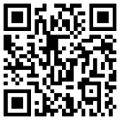Android Game for Typing Skill Evaluation
Abstract
As social beings, humans basically need does communication to express his wishes. As the technological progress, the developers are competing to create applications that facilitate communication relationships in both personal and group. In use, it is often found that a classic problem called ‘typo’ that has led to the misunderstanding in socializing. With the development of game applications based on Android, it will generate data in the form of feasibility and development typing ability of before, after, even when usage by counting the number of letters that can be solved also see the speed of words per minute users that aims to train the speed and accuracy of the type which may be impact on the ability to type in a user's social media.
Full Text:
PDFReferences
Davidson, D. R., & Misra, K. (2012). 12/976,834. United States. https://doi.org/10.1037/t24245-000
Elmunsyah, H. (2014). A national education policy-based ICT model for Indonesian vocational high schools (VHS). Global Journal of Engineering Education, 16(3).
Gupta, S. (2015). A Correction Model for Real-word Errors. Procedia Computer Science, 70, 99–106. https://doi.org/10.1016/j.procs.2015.10.047
Huang, Y., Murphey, Y. L., & Ge, Y. (2013). Automotive diagnosis typo correction using domain knowledge and machine learning. In Computational Intelligence and Data Mining (CIDM), 2013 IEEE Symposium (pp. 267–274).
Kane, S. K., Wobbrock, J. O., Harniss, M., & Johnson, K. L. (2008). TrueKeys: identifying and correcting typing errors for people with motor impairments. In Proceedings of the 13th international conference on Intelligent user interfaces (pp. 349–352). https://doi.org/10.1145/1378773.1378827
Kushler, C. A. (2012). 13/366,225. United States. https://doi.org/10.1037/t24245-000
Lai, K. H., Topaz, M., Goss, F. R., & Zhou, L. (2015). Automated misspelling detection and correction in clinical free-text records. Journal of Biomedical Informatics, 55, 188–195. https://doi.org/10.1016/j.jbi.2015.04.008
Nejja, M., & Yousfi, A. (2015). The Context in Automatic Spell Correction. Procedia Computer Science, 73, 109–114. https://doi.org/10.1016/j.procs.2015.12.055
Paek, T. S., Almog, I., Badger, E. N., Sengupta, T., Davis, S. J., Bennett, M. J., & Nealer, B. W. (2011). 12/753,744. United States. https://doi.org/10.1037/t24245-000
Pressman, R. S. (2010). Software Engineering A Practioner’s Approach. McGraw-Hill (Vol. 33). https://doi.org/10.1109/6.476732
Sommerville, I. (2006). Software Engineering (9ed ed.). Boston: Pearson Education, Inc., publishing as Addison-Wesley. https://doi.org/10.1036/0071406204
Zhou, Y., Jing, S., Huang, G., Liu, S., & Zhang, Y. (2012). A correcting model based on Tribayes for real-word errors in English essays. In Computational Intelligence and Design (ISCID), 2012 Fifth International Symposium (Vol. 1, pp. 407–410). https://doi.org/10.1109/ISCID.2012.108
DOI: http://dx.doi.org/10.17977/um010v1i12018p014
Refbacks
- There are currently no refbacks.
 | Letters in Information Technology Education (LITE) |

1.png)
1.png)
4.png)
1.png)
.png)
.png)

3.png)
1.png)
1.png)

3.jpg)